
..........................................................................................................................................................................................................
how did we not see this coming?

though i do like to keep tabs on the bicycle industry to see what it's doing these days, and what it has planned for our future, i'm totally rubbish at spotting trends or being brave enough to predict what might be headed in our direction. much of what we learn about 'the next big thing' is usually gleaned from so-called exclusives in the cycling press, from which, for this discussion, i would tend to exclude myself.
though i'd hate to give the impression that i receive an endless stream of information from all and sundry, on occasion, i do occasionally receive items for review some time ahead of their public release. naturally enough, this is not because i happen to be someone's best pal, but usually as part of a carefully studied plan, ensuring that a review of a hitherto unknown product, is published on release date.
the obvious conundrum with such matters is that keeping everything under wraps until the last minute, means that there is often no independent validation of the shiny newness to help those considering possible purchase. if every potential customer waited until one or two reviews were posted, there would be a period of unwarranted lack of demand, following a possibly expensive marketing campaign. but then, telling folks in advance, even under embargo, risks details leaking to one's competitors.
however, there are the inveitable trade shows, many of which have transformed themselves by including public days too, surely the ideal means of comprehending what might be headed our way? but those are likely only to display products or trends that the manufacturers are keen that we adopt as our own. witness hydraulic discs on road bikes or even electronic gear shifting and attendant smartphone apps. i'm pretty sure neither of those are the result of consumer demand.
but what of reactionary trends? what about facets of cycling that, while initially manufacturer led, subsequently blossomed to unheralded proportions, that, in truth, no-one saw coming? though there are a number of items open for discussion, for the purposes of this conversation, i'm thinking of e-bikes. do not misunderstand, this isn't another of those, 'ten things you need to know about e-bikes' features, or 'how to setup your e-bike'. if you doubt my word, and i'm willing to accept that at least some of the surprise has come at the behest of the covid-19 pandemic (something else no-one saw coming), consider the example of edinburgh's electric cycle company.
this specialist e-bike retailer, based in edinburgh's granton road and possibly scotland's largest specialist electric bike seller, has seen an 80% rise in sales of battery-powered bicycles since lockdown began (compared with the same period last year). and it appears that it's not only sales that have increased, but servicing too, for which the company has had to employ an extra five staff members to cope.
of course, the likely rise and rise of e-bike sales between now and 2050 is nothing particularly new. halfords has already predicted substantial growth, along with the office for national statistics, and even the society of motor manufacturers and traders. though the relaxing of lockdown restrictions may have now paved the way for car showrooms to re-open, bicycle shops have been allowed to remain open from the very start, with bicycles of all flavours being seen as the ideal method of safe and socially -distanced transport.
but an 80% rise in a matter of two months was probably not something the electric cycle company had included in their business plan for 2020. the interesting part will be to observe whether this trend continues after things have returned to some sort of normal. and since you ask, i've so far been unable to learn whether sales of regular bicycles have mirrored this trend of suffered as a result. specialized's recent release of their latest e-bike model, now has the battery integrated into an altogether less obtrusive downtube (meaning it can no longer be removed for charging) and a reduction of weight by an impressive 8kg, to only 14kg, bringing at least its form-factor closer to the bicycle we know and love.
one of the most common criticisms aimed at the e-bike market in general, is the all-up weight of the majority of bicycles, something of a handicap if storage at home or at work, is not on the ground floor. the new specialized, at a similar price point to its predecessor, can but attract more customers to the shop floor. and, once again referring to manufacturer trends, you can bet your bottom yuan, that others are following close behind.
as if to reinforce my point about an unforeseen ballooning of matters, electric cycle company managing director, neil hope said, "Nobody could have foreseen Covid-19 occurring and the resulting demand for bikes. For obvious reasons, people have not wanted to use public transport during lockdown. They have also been avoiding non-essential travel by car. The streets have been much quieter and folk are definitely feeling more confident about cycling on the roads with family, for their limited daily exercise, or to get to work, or to the shops."
though some of us 'dyed-in-the-wool' roadies would perhaps take exception, mr hope contends that his new customers are "realising that e-bikes make the whole physical process even easier and more joyful than traditional cycling, despite the larger initial investment." personal experience would, however, tend to confirm his assertion. one or two friends and acquaintances, generally loathe to spend more than £300 on a 'normal' bicycle, seem quite content to pay over £1,000 and a good bit more, for an e-bike. (mr hope confirmed that the majority of e-bikes sold, were in the £2000 - £3000 price bracket).
i would still contend there are many who could quite manageably ride a non-electric bicycle, but i'd always think twice before confronting a trend head-on.
especially an unexpected one.
monday 1 june 2020
 ..........................................................................................................................................................................................................
..........................................................................................................................................................................................................when all around are losing theirs

in the grand scheme of things, it hardly constitutes even a minor problem, but the similarity to chinese whispers, as one band member put it, made it more of a problem that it actually needed to be.
on tuesday morning, as i turned the key in the office front door, the chap whose alter ego is that of community pipe band, pipe major, appeared as if from nowhere to advise of a socially-distanced band practice that very same evening. nothing like a bit of notice. practice would be held at 7pm in order to ready ourselves for an outdoor performance at islay's residential home on saturday at 1:30pm. the elderly folks in the home, due to lockdown restrictions, had not moved from their incarceration for eight weeks, so we were to offer some light relief; if indeed, a pipe band can be categorised as such?
though it would have been easy-peasy, lemon-squeezy to have arisen at a decent hour and head out for a decent bike ride, every second saturday offers me the only opportunity to sleep-in an hour or so longer than usual. with one or two chores to be completed during the morning, i figured that a quick whizz, down to debbie's for a takeaway coffee, then ride back home for a quick shower and a bijou lunch, would likely prove a tad frantic. the better option, it seemed at the time, would be to go out on the bike following the afternoon's piping and drumming performance.
i would imagine any others who are members of a pipe band, or any other type of band for that matter, will be well acquainted with life not behaving to any kind of regulated timetable. arriving to hear the pipers tuning-up at around 1:15pm, i was greatly disappointed to learn that performance time was, in fact, one hour later than originally advised. by the time we'd played from 2:30pm until shortly after 3pm, there wasn't much of the afternoon left in which to enjoy the quiet thrum of a chain rolling through the jockey wheels.
however, in order to hide and salve my frustration resulting from a metrically modulated afternoon, i thought it essential that i get out on the bike, even of only for the less than impressive 14km that i finally managed.
when replying to any greeting, enquiring after my health, i am in the habit of replying that i am always fine; that i do fine for a living. generally speaking, that's the truth, a fact that i conveniently place at the door of my inveterate cycling habit. that 'fine' extends to both physical and mental health. however, i realise that in this i am particularly fortunate, for there are many others who fare less well, a situation possibly aggravated by the current lockdown restrictions. so, if a mere 14 kilometres on the bike can alleviate minor pipe band frustrations, i can but surmise how much more a bike ride of any indeterminate length might achieve for those suffering more seriously from mental health problems.
so, while it's eminently possible that the bicycle is proving its greater worth as a vehicle of transport in these times of social distancing, it's not outwith the bounds of consideration that it might double-up as a practical means of recuperation for those suffering from stress, confinement, despair or any other form of mental health. at the risk of stating the glaringly obvious, the bicycle is as three-dimensional as we always knew it to be.
feel free to tell someone.
sunday 31 may 2020
 ..........................................................................................................................................................................................................
..........................................................................................................................................................................................................cycling baggage

i have no idea just how or why it has happened, but since lockdown was installed some eight weeks ago, my average speed has slowly crept up to the point where i now frequently find myself some 4kph quicker than my previous self. there are, of course, factors to be taken into account. firstly, at the onset of the covid-19 restrictions, the motor traffic on islay's roads diminished almost overnight. if you accept that the majority of my regular route takes place over single track roads, the less pressing need to pull into passing places every so often was always bound to to offer some increase in average velocity. but then again, those single-track roads are frequently populated only by random farm traffic, a genre not renowned for incurring any sort of rush hour.
then there's the fact that, though this is pretty much at the onset of 'visitor season', a lifeline ferry service has mostly ensured that the visitors stay put on the other side of the mainland ferry terminal. so, in tandem with a noticeable reduction in local traffic, tourism infiltrating every nook and cranny, is conspicuous by its absence. that, however, can't possibly account for every last one of those extra kilometres. the bicycle hasn't changed, the wheels are the same as worn throughout the winter months, and the rider sure as heck isn't getting any younger in the meantime.
the only perceivable excuse, is that i'm actually getting faster. now, since i prefer to perambulate the exact same parcours, week-in week-out, is it possible that i have become inured to the vicissitudes inherent in that route? of the few hills that exist, i well know what is at the bottom, and am thus able to descend with less concern. when it comes to ascending, i may have unconsciously found the ideal line, easing the strain and quickening my pace. i know where the gravel is concentrated, i know where all the passing places are, often allowing me to time the passing of cars, without changing gear, or slowing to a halt.
in short, i might have become a better cyclist. or have i just become better at riding this particular route? if i changed to an entirely different course, would the garmin no longer have to count as high? in truth, i'm too scared to find out.
however, my new, observable average speed is in excess of the speed restriction applied to the current crop of street-legal e-bikes, confirming (as if confirmation were required), that such battery powered machinery is hardly for me. riding a pedelec, however, could conceivably be regarded as power-training, for had i need of achieving a similar average with pedal-assist, i would surely spend much of my ride, lugging a heavy bike above the level of its assistance? but were i to adopt such methodology, aside from being branded somewhat eccentric, i doubt anyone would accuse me of cheating.
the latter accusation, round these here parts at least, is not one often heard. though i have no need or desire for an e-bike, there are many who do, and there's no doubt that the exercise they get from riding, is more than many, and more than they'd get if they didn't ride at all. but despite this lack of opprobrium, it appears that proprietors of electric bikes may have chips on their collective shoulders, chips that often seem to verge on paranoia.
as an example, on leaving the croft one morning this week, i happened upon a neighbour, wearing a bright yellow jacket, and leaning a bicycle against her garden wall. given that the time of day was prior to 8am, i enquired whether she was leaving or returning, to which she replied in favour of the latter. but before i continued upon my merry way, she interjected, that she was 'cheating', because she had a battery.
for starters, considering that the bike was behind a wall, leaving only a pair of handlebars visible, i had no way of knowing what style of bicycle it actually was. so, in point of fact, there had been no need for her to mention it. and secondly, who exactly did she think she was cheating? had she returned from the national road race championship with a trophy and a winners' jersey, i would have been inclined to agree. but at 07:50 on a wednesday morning, after an early morning ride around a portion of the principality, i really couldn't quite see who would have been likely to have been demanding reparations.
an electric bike is certainly not for me, and i do believe there are many owners of e-bikes who are perfectly capable of riding a regular bicycle without great difficulty. however, if you do own and ride an e-bike, don't apologise to anyone. quite frankly, it's none of their business.
saturday 30 may 2020
 ..........................................................................................................................................................................................................
..........................................................................................................................................................................................................pump it up
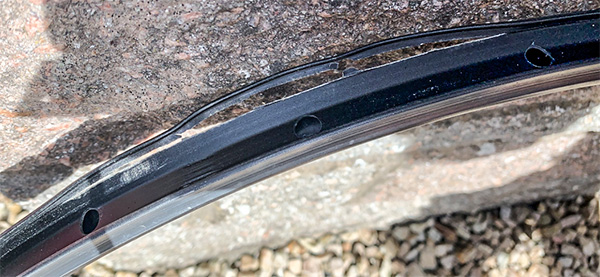
i've a feeling i have probably overstayed my welcome with regards to tubeless tyres, the flavour of the month that preceded e-bikes. too much faff, to be honest, for the end result, an end result that, to all intents and purposes, seems little different from riding on tyres and tubes. for those who have yet to experience the joys of tubeless, let me offer a précis. for those of you who think i'm utterly and completely wrong, feel free to order a coffee, or simply ride off into the sunset.
though many of the tyre manufacturers offer a range of liquids to facilitate the fitting of tubeless tyres, i have garnered, from watching youtube videos, that the prepared solution applied to the bead of the tyre, easing it onto the rim and helping to provide an equitable seal, is little more than expensive washing-up liquid. so use washing-up liquid.
having placed the tyre on the rim, it is then incumbent on the hapless cyclist or mechanic, to inflate the tyre to a minimal pressure, to seat the bead on the rim, something that we'll come back to further down the page. having done so, the tyre needs once again, to be deflated, and the valve core removed, before pouring sealant into the tyre, through that ever so narrow stem of a presta valve. if you've never faffed before, you're in for a substantial faffing session with this.
my last experience of tubeless tyres involved specialized 700x28c rubber fitted to a pair of their 64mm carbon roval specials, beloved of peter sagan for sprint stages. though the front tyre seated and sealed fairly easily, it took almost three days to finally have the rear tyre remain inflated long enough to go for a bike ride. throughout the review period, that tyre deflated overnight on every occasion. re-inflating resembled a comedy of errors, with enormous white bubbles forming between rim and sidewall. i moved and removed the rear tyre, refitted and re-glooped, as well as swapping front and rear, all to no avail. when time came for the wheels to return home, i still had not achieved the perfect seal.
my frustration with the situation could only have been exceeded, had i actually paid £1700 for them in the first place.
the claimed benefits include weight (not so that you and i would notice or need), rolling resistance (not so that you and i would notice or need) and improved puncture resistance/sealing. i cannot comment on the latter, because i didn't experience any punctures on brand new tyres.
my resistence revolves around the fact that it generally takes a lot less hassle to simply fit a tyre with an inner tube, and i'm more or less inured to carrying a spare inner for a quick-fix if i puncture when out riding. of course, it's easy enough to fit an inner tube into a tubeless tyre if punctured, but that would involve removing the tubeless valve and having to deal with the inevitable amount of white gloop on the inside of the tyre. i did, during the review period, carry a tubeless puncture kit, but this seemed mostly to consist of patches to apply to the inner surface of the tyre, assuming the hole to be too large to be dealt with by the gloop.
my unanswered question was quite how to have one of thos patches stick to a rubber surface covered in white sealant?
however, if i might return to the fitting process, i feel that i should point out a potential problem that tubeless tyres alone might cause. in the case of inner tubes, in order not to incur any popping tubes, it is common practice to inflate the tube slowly to begin with, checking all the while that the tyre is correctly seated on the rim, and the tube is not making a bid for freedom on the opposite side of the wheel. this is considered prudent practice, if only because unexpected loud bangs tend to be frightening. tubeless tyres, however, are different.
to correctly inflate a tubless tyre, it is necessary to provide an initial boost of air to have the tyre bead seat against the rim before the air escapes. with a standard track pump, this can easily turn you into arnold schwarzenegger, before proper seating occurs, but it is doable. to overcome this potential problem, several companies offer so-called boost pumps, which rely on pressurising an integral tank with air, then flicking a lever to have it exhale a substantial amount (possibly in excess of 100psi) into the tyre to complete the seating process. however, it transpires that, on narrower road rims, this sudden shock might not be ideal for the wheel rim.
according to wheelsmith's derek mclay "It turns out some of these canister pumps are blasting 120psi into road tyres designed for much less. just so that they seat into the rim hook quickly. That's not good for light alloy rims, as death (of the wheel rim) may occur."
derek has been expertly building wheels for longer than most of us have been eating pizza-crunch suppers, acquiring an enviable expertise in matters pertaining to the bicycle wheel along the way. he continued, "(Booster pumps may be) great for big volume MTB tyres, but (are) potentially deadly for low volume road tyres. I don't think it's brand specific. It's just not necessary.
I've got a rim (in the workshop) where the guy used a Stans tubeless kit, blasted it with a JoeBlow canister and blew the brake surface off!" (see the photo at the top of this article)
i do not wish to give the impression that derek disfavours tubeless tyres or rims; far from it. but on the basis that, if a ten-stone weakling such as yours truly can input sufficient grunt to seat a tubeless road tyre with a standard track pump, that would surely bear out his contention that booster pumps (which are fine for larger offroad tyres) are not only unnecessary for roadies, but potentially quite dangerous.
you have been warned.
friday 29 may 2020
 ..........................................................................................................................................................................................................
..........................................................................................................................................................................................................the joy of rest

i cannot tell a lie. on monday past, i rode to each and every distillery on the island. at the time it was purgatory, but by the time i had returned to the safety of the warm bathroom shower, it was positively heroic. the cycling was fine, the honed physique did everything asked of it, but the niggling headwind and utterly crap road surfaces made life a lot harder than it probably needed to be.
positively heroic.
when ascending or descending the stairs at home, i do kinda like to feel it in my legs, just to confirm that i've been out on the bike, being heroic. sometimes it works, sometimes it doesn't. this time it did. in fact, by wednesday lunchtime, my legs still weren't on speaking terms, either with me, or each other. and the same goes for my shoulders.
all the advice i've ever come across in the numerous training manuals and books i've had the luxury of reading and reviewing, have maintained that, if i train hard, i need to rest harder. of course, that rather pre-supposes that my riding a bike constitutes training in the first place. i have therefore hung onto the question as to whether rest should be taken as prescribed, particularly if don't consider a 120km bike ride to be training, or whether that part only applies to 'proper' cyclists?
however, as part of a rest and recuperation period, on tuesday afternoon, i accompanied an eleven year-old and a nine year-old, on a bright and sunny bike ride to gartbreck, some 4km from the croft, half of which was offroad on a gravel farm track. the farmhouse in question, was purchased several years past by a frenchman intent on converting it into a cottage distillery. though he consistently maintains that he has all the finance in place to make this a reality, in point of fact, the house remains empty and the sign at the gate advising of impending whisky, is now sadly well past its sell-by date.
however, the two young kids on mountain bikes were scarcely interested in the latter, far more intent on tiny parcel of beach immediately adjacent to the farmhouse. dropping their bikes sideways on the grass, they played happily amongst rock pools for half an hour or so, before yours truly had the hard task of marshalling them together for the return trip. it's a hardship i would reprise at the drop of a hat; to see two youngsters use their bicycles as a means to an end, and not the final solution as perceived by you and me (or just me, if you prefer). and the pace at which we travelled gave those thigh muscles no cause for complaint.
rest and recuperation.
were this a 'normal' islay whisky festival this week, the community pipe band would have been gainfully employed every evening this week, augmented by the occasional day-gig. but life's not like that anymore; the pipes remain in their bags, and the drums in their cases. or they would do, were our socially distanced birls and skirls not subsequently in demand after playing on kilnaughton beach almost two weeks ago. we have been asked to play at the residential home this saturday pm, necessitating a tuesday evening practice on the lower roof of the local gaelic college.
the latter is but a couple of kilometres from the croft, and the snare drummer transports my bass drum for me. so i needed only to cycle those two kilometres unencumbered. the college sits at the bottom of a small hill, one that still needs to be ascended in order to enjoy the descent. that's the point at which i realised my legs were not talking to me.
so, i have answered my own question. it doesn't really matter whether i consider my bike ride to be training or not; my discomfited muscles don't discriminate. i will now do my best to rest as hard as i can.
thursday 28 may 2020
 ..........................................................................................................................................................................................................
..........................................................................................................................................................................................................bits and pieces
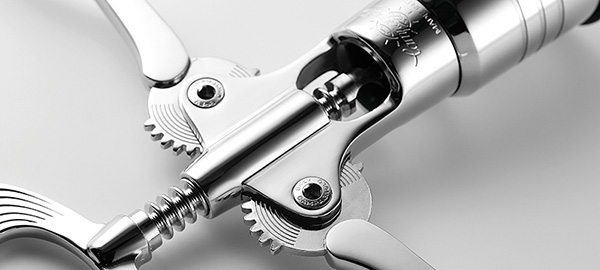
in the mid part of last century, other than raleigh roadsters and bicycles of similar ilk, the concept of purchasing an off-the-shelf road bike was entirely unknown. the keen club cyclist would choose from amongst the hand-crafted steel available, then choose the level of componentry with which they wished to festoon its person. in the uk at least, so doing was undoubtedly encouraged by the vicissitudes of the purchase tax system. if you bought a complete bicycle, such as the raleigh roadster referred to above, purchase tax was payable on the whole enchilada. acquiring frame and components, on the other hand, left the exchequer bereft of those extra few pennies.
apocryphally, this allowed the intrepid club roadie the opportunity to replace the frame every year, painted in the same colour, and thus escaping the ire of her indoors.
beginning with a frame and componentry led, obviously enough, to a second question; whether to have the bike shop put it all together, or risk botching the same job by doing it yourself? i'd have thought that having the bike shop undertake the work would essentially mean eventual purchase of a complete bicycle, thus incurring the tax you'd hoped to avoid, but my information of this part of british history is insufficient to know the answer.
this traditional means of owning a road bicycle continued well past the point where britain moved to a value added tax system, where no benefit could be had from buying in bits (so to speak), and it wasn't until the influx of mountain bikes from across the pond, that life for the cycle industry began to change. for such was the demand for this usurper, that many of the big players in the mountain bike world sought ever cheaper and streamlined means of building thousands of the blighters. where the steel road bike was concerned, mechanising a lugged construction proved all but impossible, but tig welded mtb frames could easily be handled by the new breed of automated robots. this, in effect, presaged the industry's move from lugs to tig-welding, then to aluminium and titanium which could be similarly built, but now back to hand layup of carbon.
however, by this time, taiwan had gained the reputation and expertise for the quick, economic and quality construction of bicycles, with single factories (often owned by giant), churning out frames for several manufacturers. by and large, that's how life continues at present, a situation that has engendered an unfortunate 'victim'.
along with an enviable reputation for crafting the most sought after lugged steel bicycles in the 1950s and 60s, italy was also home to the king of bicycle componentry in vicenza: campagnolo. many of the innovations we take for granted nowadays, including the marketing of a complete 'groupset', were pioneered by campagnolo. at the time, they did not, however, have the field entirely to themselves; huret, zeus, ofmega, galli, universal, stronglight, omas, t.a., suntour and mavic were all competitors at one time or another. shimano were all but unheard of at the time, more concerned with producing freewheels than gearsets, and with a market more parochially concerned with its own part of asia.
the shimano bicycle company was not consolidated until 1951 and japan spent the 1950s building three-speed, internal gear hubs, a la sturmey archer. though shimano have a reputation as one of the world's more prominent fishing tackle providers, this division of the company was not consolidated until 1971, shortly after shimano america was established and only a few years in advance of the company's creation of a european division. two years ahead of the introduction of shimano dura-ace in 1976, the positron system was introduced to the cycle market, a system that included the first steps towards indexed gears, with experience gained from the fishing reel division.
up until that point, campagnolo had largely had things go its own way, with the majority of professional teams riding campagnolo groupsets and its inherited italian reputation pretty much intact. not until lance armstrong's first tour victory aboard a shimano-equipped (carbon) trek bike in 1999, did the component landscape begin to change. it was only a matter of ten years before new kid on the block, sram, took their first tour victory with alberto contador also on a trek.
however, the rise and rise of both shimano and sram at the expense of campagnolo's market share, had little or nothing to do with race victories, but everything to do with manufacturing. with the likes of trek, specialized, giant, et al having their bicycles built in the far east, the higher cost of continuing to do so in any european country made it all but impossible for event the marques with an impressive history, to compete on price. thus, pinarello, colnago, gios and others, had little option but to move their own production to the east.
and now that the once emergent mountain bike had made common the concept of buying a complete bicycle, road bikes had pretty much followed suit. in order to simplify the production and distribution process in a world becoming smaller every day, this meant that stocks of original equipment componentry, including groupsets, bars, stems, saddle, wheels etc., were now needed at point of origination. this, serendipitously, played into the hands of both american-owned sram and japanese-owned shimano, both of whom had their own manufacturing in the area. campagnolo, who had remained true to their italian roots, were now left out in the cold.
in order to encourage the bike manufacturers to fit campagnolo as original equipment, meant shipping the componentry from italy to taiwan, incurring greater costs than their competitors, thus effectively making vicenza a less competitive player in the market. and yet, though professional race teams are hardly dependent on receiving their bikes from the shop floor, even in the current postponed season, campagnolo sponsor only three teams at world tour level: lotto soudal, uae and cofidis, only one-sixth of those potentially available.
however, the latter may also be constrained by economic necessity; depending on who you ask, campagnolo's market share possibly hovers around the 10% mark, though, as uk service engineer, and chief mechanic for sven thiele's hot chillee events, graeme freestone king told me, this is in a (for now), continually growing market. "The market has grown, driven primarily by good quality, low cost components sold at OE. Campag has grown too, but not at the exponential rate of Shimano."
"I've been logging it at Hot Chillee events over the last 17 years - some years/events more accurately than at others, and it appears to be 8 - 10%, depending, too, on which event. Some are noticeably Campag-heavy (Alpine Challenge) and some Campag-light (Cape Rouleur), as it depends somewhat on the individual market conditions and on how much straight OE there is there, compared to custom build."
taking all those factors into consideration, it is perhaps not too surprising, therefore, that portland-based, chris king components, have decided to end production of their campagnolo freehub model. with a range that must now include hubs for disc-brake as well as caliper brake road wheels, along with apparently endless variations of the mountain bike wheel, no doubt the campagnolo cassette hub succumbed to rationalisation, purely on the basis of limited demand. cycling tips website has also conjectured that the introduction of tabs on the rear of campagnolo's newest 12-speed cassettes, designed to catch the chain before it jams, if subject to over-shifting, may well have been a welcome italian innovation that required american retooling to accommodate on the chris king hub.
over the years, many folks (self-included), have wondered why camapgnolo hasn't just bowed to economic pressure, and adopted the shimano-pattern freehub, just as sram have done. but now that the latter have strayed in their own direction to accommodate a ten-tooth cog on their own 12-speed drivetrain, perhaps vicenza was right to continue to tread their own, singular path. it is arguably, a better and more efficient design, sporting deeper channels, and less susceptible to the sprockets digging their way into the hub surface.
i have read many comparisons between all three manufacturers' products, and almost inevitably, campagnolo gains major brownie points for build quality, followed by the adjective 'clunky' when describing the gear shifting (with which i would exception). but then again, there is also the well-kent phrase, 'shimano/sram wears out, while campagnolo wears in.'
campagnolo's market share may well be a tad on the small side compared to its peers, but there is evidence to show that not only do they play well to their strengths, but rarely seem to spend above their means. campagnolo continues to engender a level of fanaticism amongst die-hard users that shimano and sram would, no doubt, dearly love to emulate. unfortunately, what may be viewed as even more disappointing than the loss of chris king's favour, is the knowledge that eric norris's campyonly website appears to have gone from our browsers.
however, campagnolo has existed since 1933, ever since tullio found himself with cold fingers and an inability to flip his rear wheel. that's 87 years and counting, and i fully expect to be celebrating a 100th anniversary 18-speed super-record, thought-controlled, wireless groupset in 13 years' time.
many thanks to velotech-cycling's graeme freestone king for assistance with this article.
wednesday 27 may 2020
 ..........................................................................................................................................................................................................
.............................................................................................................................................................................................................and then it rained
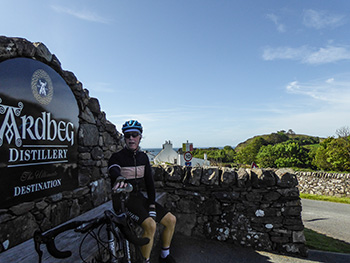
the 2019 tour de islay took place on the first saturday of the annual islay whisky festival, or fèis ìle as it prefers to be known. the plan was for hordes of us, including an unidentified american visitor, to depart ardbeg distillery at 09:30 and visit each distillery in turn, getting our scotch malt whisky society (smws) brevet cards stamped at each as confirmation of the trip. every distillery that is, apart from lagavulin, whose open day was held that particular saturday, and none of us fancied standing in the lengthy queue outside the visitor centre, just to get a card stamped.
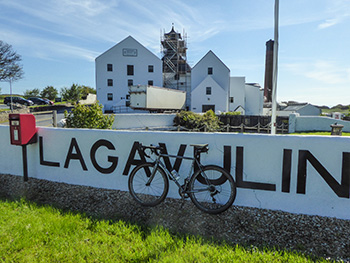
characteristically for this part of the world, it started raining before we'd left ardbeg's car park, and pretty much persisted for the rest of the day. the american never turned up, probably having looked out his accommodation window, and thought better of it. the same thoughts must have occurred to the rest of the potential horde, since ultimately, the smws peloton consisted of only five.
the plan, as in the best laid of mice and men, was to have turned the 'tour de islay' into an annual event, particularly following last year's, when richard and i received several requests to join the 2020 peloton. apparently the distilleries all still possess those rubber stamps,
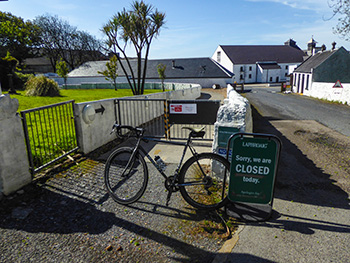 (whether they can find them again, or not, would be the $6 million question) and i dare say there are still a few brevet cards lying about. but then the covid virus intervened, followed by a nationwide lockdown and a lifeline ferry service open only to essential and key workers along with proven residents of the island.
(whether they can find them again, or not, would be the $6 million question) and i dare say there are still a few brevet cards lying about. but then the covid virus intervened, followed by a nationwide lockdown and a lifeline ferry service open only to essential and key workers along with proven residents of the island.
not the ideal conditions in which to form a peloton at ardbeg distillery on festival saturday.
as luck would have it, the weather was horrendous on saturday past, with 80+ kph winds and a cancelled ferry. that would probably have put paid to any who had intended travelling over on the morning boat. with no-one
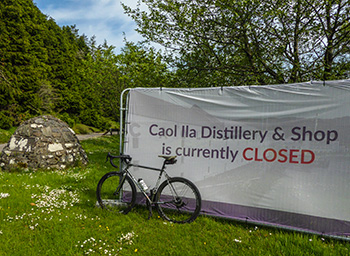 to join in from afar, i figured i would undertake the event myself, hopefully raising a few pounds for the island's residential home in the process. that way, even in the absence of participants, it'll keep the event alive and kicking until next year. in view of saturday's weather, i delayed my tour until monday.
to join in from afar, i figured i would undertake the event myself, hopefully raising a few pounds for the island's residential home in the process. that way, even in the absence of participants, it'll keep the event alive and kicking until next year. in view of saturday's weather, i delayed my tour until monday.
my intentions were not to enter any of the distillery grounds, since they're all closed to visitors anyway, few of them are in production and i didn't want to appear as an arrogant islander, wandering in where i was probably not wanted, purely on the basis that i know people, and they know me. instead of getting a card stamped, this year i simply took photos of the ritchey around and about each location.
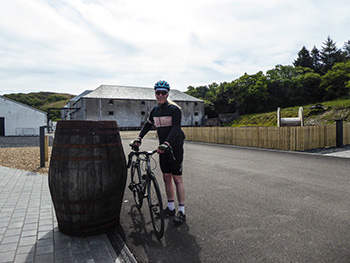
though the distance from first distillery to the last turns out to be approximately 100km, there was still the not insurmountable matter of riding from bowmore to ardbeg in the first place. no matter what the forecasts tell you, there's nearly always a lot more wind than the met office says there will be. though it may have been a few kph short of actual galeforce, the headwind that slowed me along the 16 kilometres of low road to port ellen, never actually gave up all day. though it formed a welcome tailwind after visiting the three southernmost distilleries, after caol ila, it just wouldn't go away.
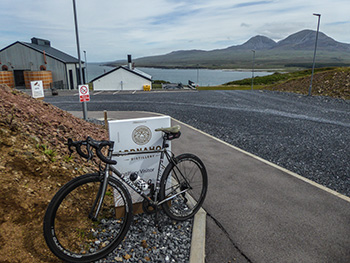
there are roadworks taking place on the brief descent into ardbeg, so i satisfied myself wth the 'rest and be thankful' bench at the top of that road. lagavulin has scaffolding all round the pagodas, rather lessening the quaintness of its iconic image, and laphroaig has a portable sign informing the intrepid cyclist, that they are closed to visitors. all this creates an eerie quietude at the start of a week that would usually see thousands of whisky aficionados wandering aimlessly but eagerly around anything that looks vaguely like a distillery.
islay high school features a pretend pagoda atop its roof, the better to meld with bowmore distillery a few metres down the road. in previous years, whisky enthusiasts have been seen wandering up school street in search of even more drams.
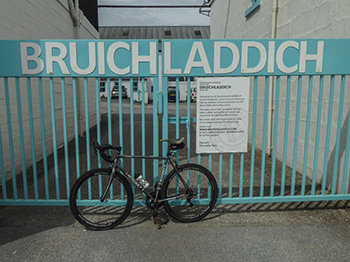
the three southernmost distilleries are substantially separated from their northern counterparts, entailing a bike ride of nigh on 30km up the 6% glen road to ballygrant, then onto caol ila distillery. this particular diageo plant is currently undergoing a major re-fit to johnny walker-ise their visitor centre. thus, it's a building site with no public access. that, to be honest, was a bit of a relief, because the narrow road leading to and from caol ila, is a short, sharp climb, and one i was happy to have missed. and just in case anyone is tempted to pop down for a look-see, there are substantial 'closed' banners at the top.
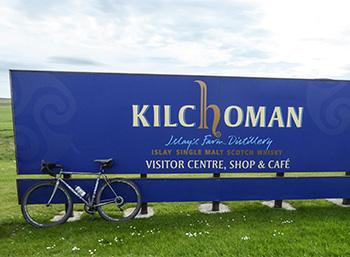
bunnahabhain and ardnahoe distilleries are both to be found on the same road, the entrance to which is but a few metres from the caol ila road-end. last year, we rode to bunnahabhain first and stopped at ardnahoe's café on the way back. that worked fine last year, so i repeated the parcours again this year.
bunnahabhain distillery is nearing the end of being re-modelled, with two large warehouses having been demolished and replaced with a visitor car park, something notably missing from islay's most northerly distillery for many a long year. this lies opposite their new, trendy-looking visitor centre which has not yet had a chance to open, having been only completed just before lockdown took over. i took the opporchancity to be the first to use the adjacent cycle racks.
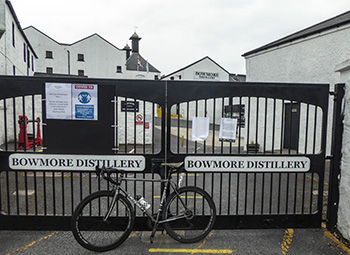
after a pleasantly steep descent to reach bunahhabhain, i had then to plod uphill most of the way back to ardnahoe. lockdown restrictions mean that the café is currently closed, meaning no opportunity for a feed and a coffee, before scaling the 14% climb that added a frisson to my northerly visit.
having thus visited six distilleries in a matter of two hours, i had now to ride 20km southwest to bruichladdich and debbie's café for a welcome double-egg roll, a large chunk of mrs washingmachinepost's fruit loaf, and a soya cappuccino. the laddie gates remain closed, so it was a case of another one of those bike against the railings images. unfortunately, islay's most westerly distillery at kilchoman is about 8km along a single-track road overlooking loch gorm and in the general direction of the north atlantic. it's sort of out on a limb, and features a long, smoothed dirt-track up to the recently expanded distillery and visitor centre. since it too is closed at present, and i preferred not to ride my nice road-bike along the gravel, i stopped at the enormous sign adjacent to the gate.
the only remaining distillery on the list was that of bowmore and home, reached and photographed just before the inevitable rain. if anyone feels they'd like to contribute to the sponsorship coffers, all contributions would be gratefully received (drop me an e-mail). and all being well, maybe you could join us next year.
thanks to rapha, campagnolo and ritchey for taking me safely round nine distilleries.
tuesday 26 may 2020
 ..........................................................................................................................................................................................................
..........................................................................................................................................................................................................